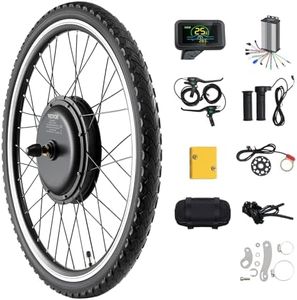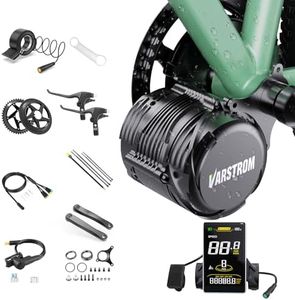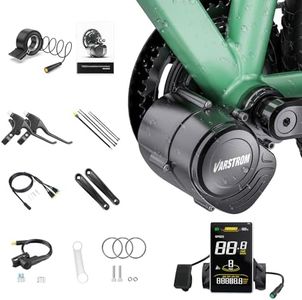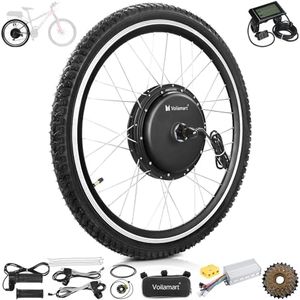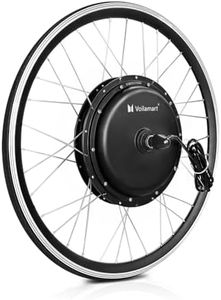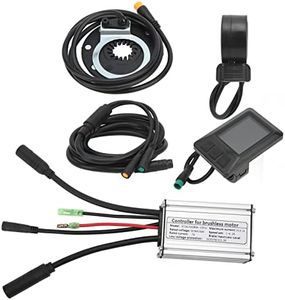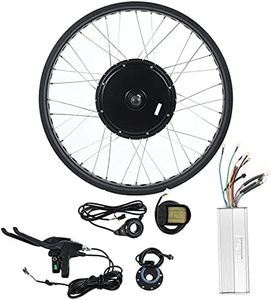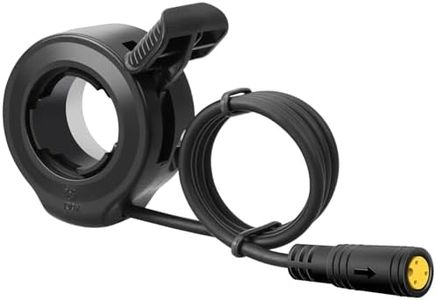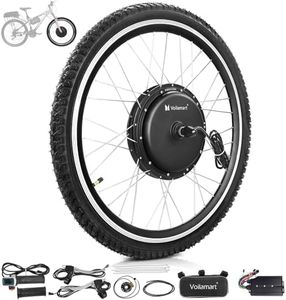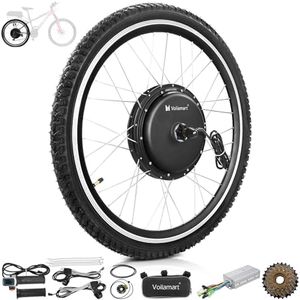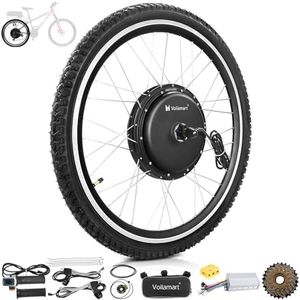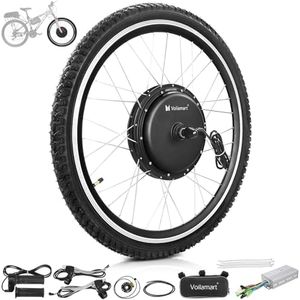We Use CookiesWe use cookies to enhance the security, performance,
functionality and for analytical and promotional activities. By continuing to browse this site you
are agreeing to our privacy policy
10 Best Electric Bicycle Conversion Kits
From leading brands and best sellers available on the web.By clicking on a link to a third party's website, log data is shared with that third party.
Buying Guide for the Best Electric Bicycle Conversion Kits
Choosing the right electric bicycle conversion kit can totally transform your cycling experience, turning a regular bike into an efficient e-bike. Since conversion kits come in various forms and types, it's important to understand your riding habits, terrain, and the kind of upgrade you want for your bike. Think about what you want to achieve—whether it's commuting, leisurely rides, or off-road adventures. Carefully examining the main specifications will help you choose a kit that aligns with your needs and ensures a smooth, enjoyable ride.Motor Power (Watts)Motor power indicates how much assistance the conversion kit will provide for riding. Measured in watts, this spec affects how quickly you can accelerate, how easily you can climb hills, and the top speed achievable. Lower power (around 250-350W) is ideal for flat city commutes and leisure use, offering steady support without being overwhelming. Medium power (around 500-750W) provides a balance for mixed terrains and moderate hills. Higher power (over 750W) is suited for heavier riders, cargo, tough hills, or off-road adventure. Consider the local regulations as well as your typical terrain—choose the wattage that matches your expected use for best results.
Battery Voltage and Capacity (V, Ah)The battery determines how much energy your kit can store and deliver, affecting both riding range and power. Voltage (V) impacts how powerful the motor feels, while capacity (Ah, or amp-hours) controls how far you can travel on one charge. Lower capacities (under 10Ah) best suit shorter trips, while medium (10-15Ah) fits regular commuting or extended rides. Higher capacities (over 15Ah) provide long-distance range for touring or all-day use. Choose voltage and capacity based on your daily distance and need for power—more capacity means more range, but also adds weight.
Motor Type (Hub vs. Mid-Drive)Conversion kits usually feature either a hub motor (in the wheel) or a mid-drive motor (at the crankset). Hub motors are generally simpler to install and suit flat to moderately hilly terrain, offering steady power ideal for city rides. Mid-drive motors are more efficient on steep hills and provide better balance and handling since they integrate with the bike’s gears. If you ride mainly on flat routes or want an easy install, hub motors are a practical choice. If your rides include tough climbs or off-road paths, mid-drive systems may serve you better.
Wheel Size CompatibilityThis specification ensures the conversion kit’s components, especially the motorized wheel or hub, fit your existing bicycle. Bicycle wheels come in standard sizes like 26”, 27.5”, 700C, and 29”. It’s essential to match the conversion kit’s wheel size to your bike’s wheel to ensure safe and efficient operation. Check your bike’s tire markings for size, and only select a kit designed for that size to avoid installation and safety issues.
Pedal Assist and Throttle OptionsMost kits offer pedal assist, throttle, or both. Pedal assist provides motor power as you pedal, making cycling easier and preserving the bike’s feel; you’ll often have settings to control how much help you receive. Throttle operation lets you ride without pedaling by simply twisting or pressing a lever. Choose pedal assist if you want a traditional cycling experience with a boost, or opt for throttle if you prefer to rely on the motor alone at times—some users appreciate having both options for flexibility.
Ease of InstallationSome kits are designed for quick, tool-free installation, while others require more time and mechanical know-how. Easy-install kits typically include straightforward instructions and plug-and-play connections, perfect for beginners or those who want minimal hassle. More advanced kits might require swapping out the crankset or running extra cables. Consider your comfort level with bike maintenance—choose a simple kit if you’re new to bike work, or a more complex option if you have experience and want a customized setup.
